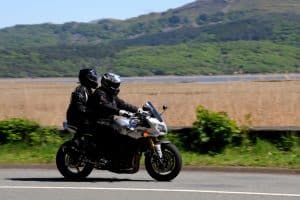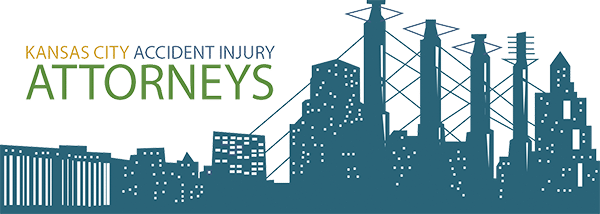How to Be a Good Motorcycle Passenger
 If you plan on riding on the back of someone’s motorcycle, you may think that the only thing you need to do is wear a helmet and hang on, and that the driver is the only one who needs to be taking precautions and paying attention. The reality is that there are things that a passenger can do to ensure that not only they, themselves, are safe, but also that the driver is safe as well.
If you plan on riding on the back of someone’s motorcycle, you may think that the only thing you need to do is wear a helmet and hang on, and that the driver is the only one who needs to be taking precautions and paying attention. The reality is that there are things that a passenger can do to ensure that not only they, themselves, are safe, but also that the driver is safe as well.
7 tips for being a good passenger on a motorcycle
So, you’re looking to have fun on the back of a motorcycle. Good! Let’s take a look at how a passenger of a motorcycle should act, and what you should wear. Safety should be your first priority.
- Wait until the operator is seated before getting on. Don’t “jump” on the bike or hop on if the operator isn’t prepared; you could end up tipping the motorcycle, or throwing the operator off balance.
- Learn passenger etiquette. As a passenger, avoid sudden movements that can affect the bike’s balance. Stay still and find a comfortable position to reduce the need for adjustments during the ride. Don’t distract the operator and NEVER place your hands over their eyes. Avoid putting your arms around the operator’s arms or chest; it can make it harder for them to drive. Instead, if the motorcycle doesn’t have handles for you to grab, wrap your arms around the operator’s lower waist and hold tight (without squeezing too hard).
- Make sure to sit close to the operator. It’s safer to stay a little closer. Per one Harley dealership, “you should be close enough that you can feel their body language and mirror it. During a turn, for example, a passenger on a motorcycle should lean with them, so being close will help you both move in sync.”
- Prepare for turns and stops. When the motorcyclist comes to a stop at a light, or makes a sudden stop to avoid a hazard on the road, you want to be prepared as well, so you are not thrown forward into the driver. During stops, lean back towards the bike’s backrest instead of forward. When the bike turns, stay neutral and avoid leaning in the opposite direction. Balance is important when it comes to motorcycles.
- Keep your feet up. You might be tempted to put your feet down when the motorcycle comes to a stop at a light or a stop sign. Don’t do it. There are places to safely place your feet while you ride, and you should keep them planted when you stop at lights.
- “Be an active participant.” The Harley dealership points out that you want to find a way to communicate with the driver easily, using hand signals or Bluetooth devices if necessary.
- Use your eyes and ears. It can get pretty loud on the back of a motorcycle, but if you hear something, let the driver know through your agreed-upon signals. Help the driver by spotting potential hazards and discussing how you can assist without distracting them.
How can I protect myself while riding on a motorcycle?
Being a good passenger is important, but you’ll need to protect yourself, too. That means wearing the right gear while you ride:
- Protect your head by wearing a helmet when riding a motorcycle. Helmets are crucial for safety, even if not required by law. Look for one that fits well and covers your entire face for the best protection. The protective ability of helmets is part of the reason why so many states now require both drivers and passengers to wear them on motorcycles. Unfortunately, Missouri used to require all drivers and passengers of a motorcycle to wear a helmet, but due to updates to the law in 2020, anyone over the age of 26 does not need to wear a helmet, as long as they have health insurance. Regardless, you should have a helmet that meets the standards set by the Department of Transportation.
- Jacket. Invest in a protective jacket, preferably leather, for upper body safety. Reflective jackets enhance visibility, especially in adverse conditions or at night. Regular tops and shirts simply will not hold up to road rash.
- Riding pants. Wear pants that cover your legs entirely. Specialized motorcycle pants with Kevlar padding are ideal, or you can use attachable riding pants over regular jeans. Special pants are good for the same reason as jackets: it protects you from the harsh friction of the road in the event of an accident.
- Boots. Your ankles and legs sit close to the fast moving wheels and hot exhaust pipes. Sandals or even tennis shoes will do nothing to protect you, and if you are in an accident, you may end up losing toes, or even your entire foot. Wear appropriate footwear like boots to safeguard your feet and ankles from injury. Heavy work boots with ankle protection are suitable.
- Gloves. Protect your hands with motorcycle riding gloves. They can help reduce hand injuries in case of a fall. Road rash can lead to infections, which can eventually lead to amputation. So keep your hands covered if you want to keep your fingers.
What if I’m injured while riding on the back of a motorcycle?
Even when you are wearing everything you should, and are taking all the preventative measures, you still may end up in an accident with another vehicle. If it was their negligence that caused the accident, then you should be compensated for your injuries (which are hopefully less severe considering the safety measures you took), your medical bills, and any lost wages from not being able to work due to your injuries. If the motorcycle operator caused the crash, you also have legal options for pursuing compensation. How you proceed with that claim may change based on who is liable and what insurance is available, but we can help with that.
At Kansas City Accident Injury Attorneys, we have long represented victims of motorcycle accidents, understanding that other drivers often don’t check for motorcycles properly when on the road. We will make you our top priority and work to ensure that you secure significant and appropriate compensation. To schedule a free consultation, call us or use our contact form. Our attorneys can meet with you anytime at our office in Kansas City, MO, or you can schedule an appointment at our offices in Lee’s Summit, Parkville and St. Joseph (MO); Olathe, Kansas City, and Overland Park (KS).
Related:
- Can an Injured Motorcycle Passenger File a Claim Against an Operator?
- Safety and Liability for Motorcycle Passengers

Kansas City personal injury attorney James Roswold of Kansas City Accident Injury Attorneys handles cases dealing with victims of personal injury, medical negligence, wrongful death, workers compensation, nursing home negligence, premises liability, product liability, car accident, truck accident and motorcycle accident cases.

